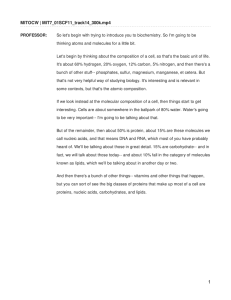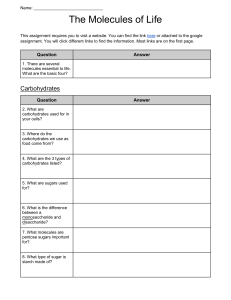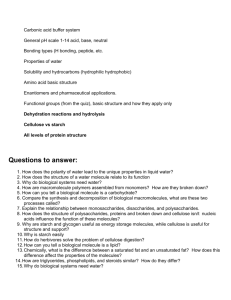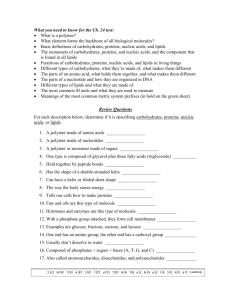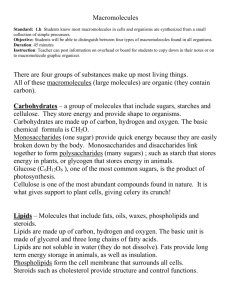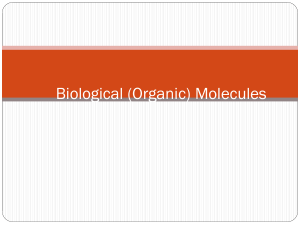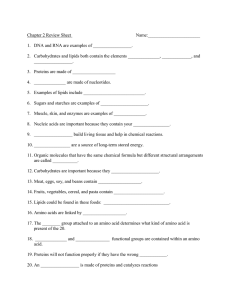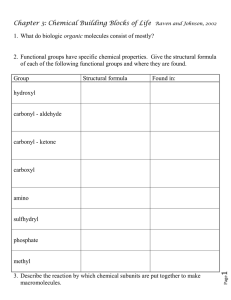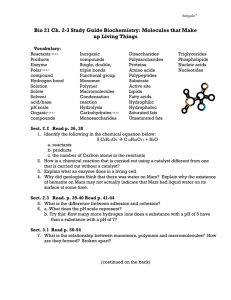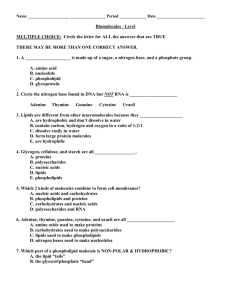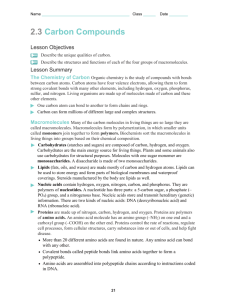AP Biology: Macromolecules Topic Presentation: Prezi by Mr David
advertisement
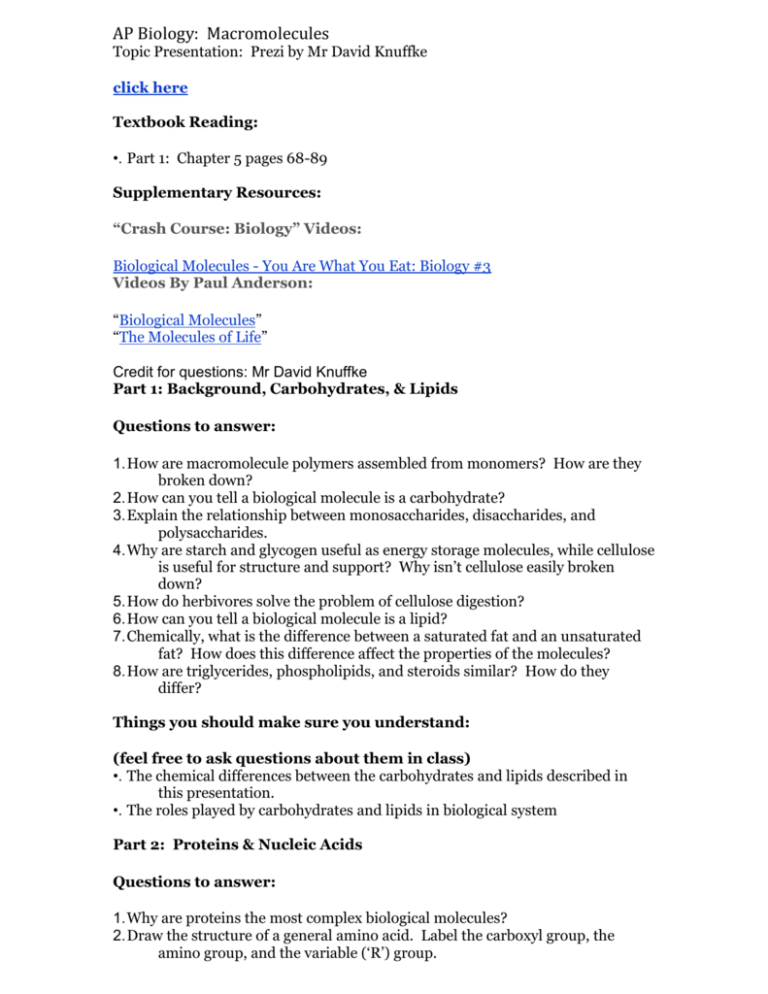
AP Biology: Macromolecules Topic Presentation: Prezi by Mr David Knuffke click here Textbook Reading: •. Part 1: Chapter 5 pages 68-89 Supplementary Resources: “Crash Course: Biology” Videos: Biological Molecules - You Are What You Eat: Biology #3 Videos By Paul Anderson: “Biological Molecules” “The Molecules of Life” Credit for questions: Mr David Knuffke Part 1: Background, Carbohydrates, & Lipids Questions to answer: 1. How are macromolecule polymers assembled from monomers? How are they broken down? 2. How can you tell a biological molecule is a carbohydrate? 3. Explain the relationship between monosaccharides, disaccharides, and polysaccharides. 4. Why are starch and glycogen useful as energy storage molecules, while cellulose is useful for structure and support? Why isn’t cellulose easily broken down? 5. How do herbivores solve the problem of cellulose digestion? 6. How can you tell a biological molecule is a lipid? 7. Chemically, what is the difference between a saturated fat and an unsaturated fat? How does this difference affect the properties of the molecules? 8. How are triglycerides, phospholipids, and steroids similar? How do they differ? Things you should make sure you understand: (feel free to ask questions about them in class) •. The chemical differences between the carbohydrates and lipids described in this presentation. •. The roles played by carbohydrates and lipids in biological system Part 2: Proteins & Nucleic Acids Questions to answer: 1. Why are proteins the most complex biological molecules? 2. Draw the structure of a general amino acid. Label the carboxyl group, the amino group, and the variable (‘R’) group. 3. Draw the formation of a peptide bond between two amino acids. 4. How does the structure of the ‘R’ group affect the properties of a particular amino acid? 5. Define each of the following levels of protein structure and explain the bonds that contribute to them: a. Primary b. Secondary c. Tertiary d. Quaternary 6. How can the structure of a protein be changed (“denatured”)? 7. Draw a nucleotide. Label the phosphate, sugar, and nitrogenous base. 8. Explain the three major structural differences between RNA and DNA. Things you should make sure you understand: (feel free to ask questions about them in class) •. How the structure of proteins and nucleic acids allow for their biological functions. •. How both protein structure and nucleic acid structure illustrate the concepts of emergence and combinatorial complexity. •. Why directionality and sequence are crucial for the structure and function of proteins and nucleic acids. •. How nucleic acids and proteins function in storage and expression of biological information.



